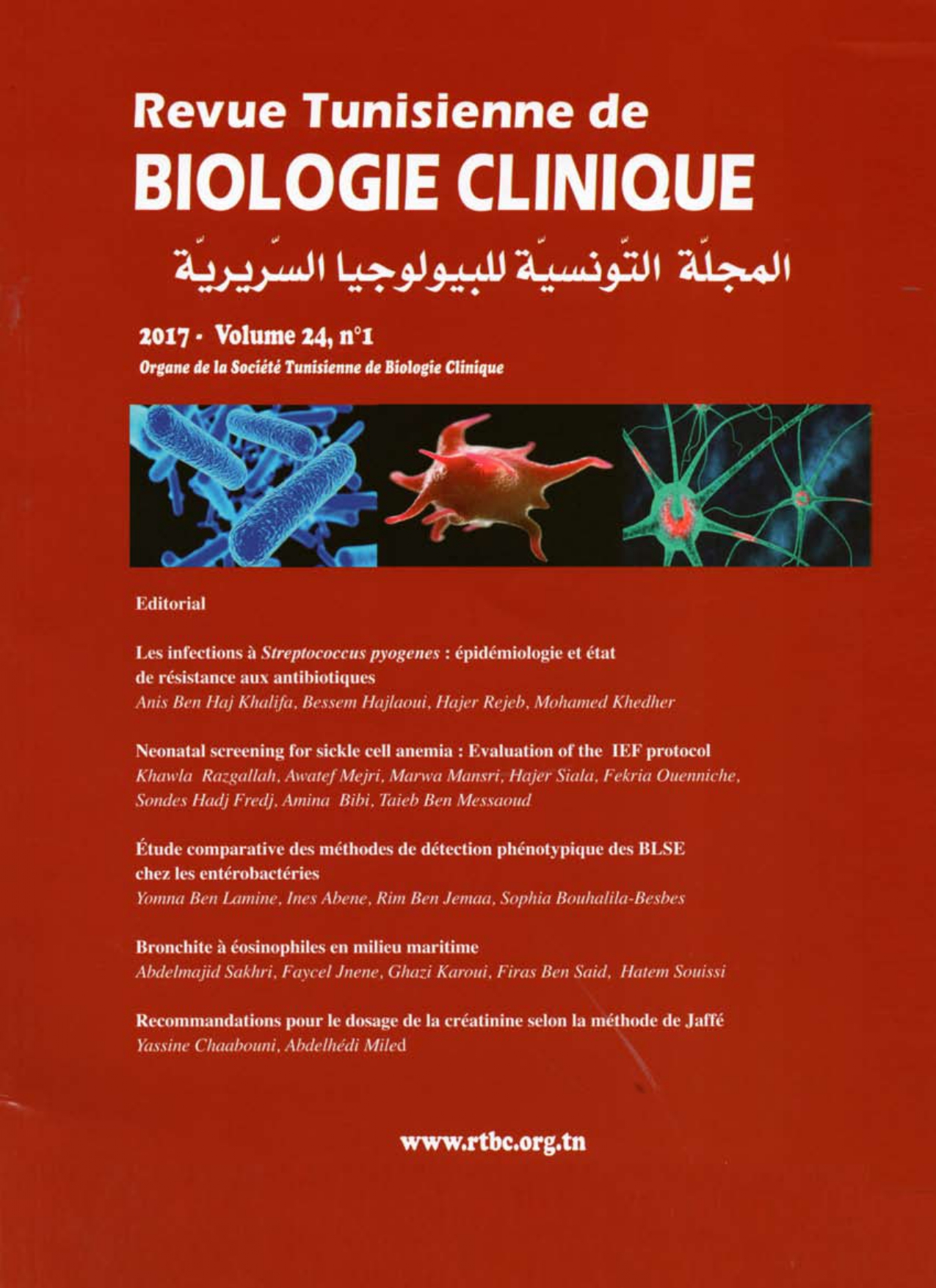Abstract
Introduction: The resistance of Enterobacteriaceae to antibiotics is experiencing a worrying global trend with an increasing impact of extended spectrum beta- lactamases (ESBL). These bacteria are responsible for infections both nosocomial and community. The aim of this work was to study different methods of phenotypic detection of ESBL in Enterobacteriaceae in order to establish an effective strategy for the detection of these enzymes. Materials and methods: This is a retrospective study carried out in the Department of Clinical Biology and Blood Bank, Microbiology Unit, at the Mohamed Kassab Institute of Orthopedics and covered 73 strains of Enterobacteriaceae resistant to 3rd generation cephalosporin. Results: Our study found that ESBL detection results varied by method. The screening test on chromogenic medium allowed us to detect 71 strains producing ESBL. The double synergistic test revealed 58 ESBL strains without approximation, 64 after closure and 67 in the presence of cloxacillin. The combined disc method and the dual disk test detected 72 strains. Conclusion: Phenotypic detection of ESBL by methods combining cephalosporins and beta- lactamase inhibitors could be the most useful strategy. Confirmation and differentiation between different types of ESBL can only be made by molecular biology.

This work is licensed under a Creative Commons Attribution 4.0 International License.
Copyright (c) 2017 Revue Tunisienne de BIOLOGIE CLINIQUE

